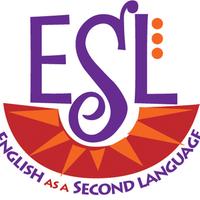Unit 120 The First Nations
|первый||
|||Nações
|||民族
Referat 120 Die ersten Nationen
Unidad 120 Las Primeras Naciones
Unità 120 Le Prime Nazioni
ユニット 120 先住民族
Jednostka 120 Pierwsze Narody
Unidade 120 As Primeiras Nações
Unit 120 Первые нации
Ünite 120 İlk Milletler
Розділ 120 Перші нації
单元 120 第一民族
G : The First Nations are the people who lived in North America before Europeans migrated there.
|||||||||||||европейцы||
||||||||||||||moved to|
|||||||||||||os europeus|migraram|
|||||||||||||欧洲人|迁移|
||||||||||||||мігрували|
|||||||||||||ヨーロッパ人|移住した|
|||||||||||||los europeos|migraron|
G : Die First Nations sind die Menschen, die in Nordamerika lebten, bevor Europäer dorthin migrierten.
G : Los pueblos indígenas son las personas que vivían en América del Norte antes de que los europeos emigraran allí.
G:先住民は、ヨーロッパ人が北アメリカに移住する前に北アメリカに住んでいた人々です。
G: As Primeiras Nações são as pessoas que viveram na América do Norte antes de os europeus migrarem para lá.
Ж: Первые нации - это люди, которые жили в Северной Америке до того, как туда переселились европейцы.
G:原住民是欧洲人移居北美之前居住在北美的人们。
There is a place in Canada where you can learn about the culture of the First Nations.
Es gibt einen Ort in Kanada, an dem man die Kultur der First Nations kennenlernen kann.
Hay un lugar en Canadá donde puedes aprender sobre la cultura de los pueblos indígenas.
カナダには先住民の文化を学ぶことができる場所があります。
В Канаде есть место, где можно познакомиться с культурой первых наций.
加拿大有一个地方可以让您了解原住民的文化。
It is where the First Nations people used to live.
||где|||||жили||
Es ist der Ort, an dem die First Nations lebten.
Es donde solían vivir las personas de los pueblos indígenas.
先住民が住んでいた場所です。
Здесь жили люди из племени первых наций.
这是原住民曾经居住的地方。
Now, a Visitors' Center is there.
||游客|||
||посетителей|||
Jetzt gibt es ein Besucherzentrum.
現在、ビジターセンターがあります。
Теперь здесь находится Центр для посетителей.
现在,那里有一个游客中心。
There is also an archeology lab and walking trails.
||||考古学|实验室||步道|步道
||||||||senderos
||||考古学||||
||||arqueologia|laboratório|||caminhos
|||||||пешеходные|
Es gibt auch ein Archäologielabor und Wanderwege.
También hay un laboratorio de arqueología y senderos para caminar.
考古学研究室とウォーキングトレイルもあります。
Здесь также есть археологическая лаборатория и пешеходные тропы.
还有一个考古实验室和步行道。
You can learn about the culture through the displays in the Center.
||||||通过||展览|||
|||||||||||Центрі
||||||||展示物|||
||||||através||exibições|||
||||||||экспонаты|||
Man kann die Kultur durch die Ausstellungen im Zentrum kennenlernen.
Puedes aprender sobre la cultura a través de las exhibiciones en el Centro.
センターの展示を通して文化を学ぶことができます。
О культуре можно узнать из экспозиций, представленных в центре.
您可以通过中心的展示了解文化。
The displays show everyday activities.
|||повседневные|
|ディスプレイ|||
|as exposições|||atividades
||||活动
Die Ausstellungen zeigen alltägliche Aktivitäten.
Las exhibiciones muestran actividades cotidianas.
ディスプレイには日常の活動が表示されます。
На дисплеях показаны повседневные действия.
显示屏显示日常活动。
They show how the people lived.
||||people|
Sie zeigen, wie die Menschen lebten.
彼らは人々がどのように生きたかを示しています。
Они показывают, как жили люди.
它们展示了人们的生活方式。
The gift shop in the Visitors' Center sells crafts made by the First Nations people.
|||||||продает|||||||
|Geschenk|||||||||||||
|loja|||||||||||||
||||||||手工艺品||||||
Der Geschenkeladen im Besucherzentrum verkauft von den First Nations Menschen gefertigte Handarbeiten.
La tienda de regalos en el Centro de Visitantes vende artesanías hechas por el pueblo de las Primeras Naciones.
В сувенирном магазине в Центре для посетителей продаются поделки, сделанные народом первых наций.
游客中心的礼品店出售原住民制作的工艺品。
There are jewelry, paintings, and pottery.
||珠宝|||陶器
|||||cerâmica
|||||cerámica
Es gibt Schmuck, Gemälde und Töpferwaren.
Hay joyería, pinturas y cerámica.
Existem joias, pinturas e cerâmica.
Здесь есть украшения, картины и керамика.
You can also eat at the restaurant.
||também||||
Man kann auch im Restaurant essen.
También puedes comer en el restaurante.
Вы также можете поесть в ресторане.
Bison meat is in many dishes.
бизон|||||
bisonte|||||pratos
野牛|||||菜肴
бізон|||||
バイソンの肉|||||
bisonte|||||
Bisonfleisch ist in vielen Gerichten.
La carne de bisonte se encuentra en muchos platos.
バイソンの肉は多くの料理に含まれています。
Мясо бизона входит во многие блюда.
野牛肉出现在许多菜肴中。
There are also wild rice dishes, fruit pies, and traditional bread.
|||||||пироги|||
|||selvagem|||||||
|||||||kuchen|||
|||野生||||||传统的|
|||дикий|||||||
|||||||パイ|||
Es gibt auch Wildreisgerichte, Obstkuchen und traditionelles Brot.
También hay platos de arroz salvaje, tartas de frutas y pan tradicional.
ワイルドライス料理、フルーツパイ、伝統的なパンもあります。
Также предлагаются блюда из дикого риса, фруктовые пироги и традиционный хлеб.
还有野米菜肴、水果馅饼和传统面包。
All of the food is tasty.
|||||好吃
|||||すべての料理は美味しいです。
|||||saborosa
|||||вкусная
Das gesamte Essen ist köstlich.
Toda la comida es sabrosa.
Вся еда очень вкусная.
The archeology lab is run by the local university.
|考古学|||||||
||||управляется||||
Das Archäologielabor wird von der örtlichen Universität geleitet.
El laboratorio de arqueología está dirigido por la universidad local.
考古学研究所は地元の大学が運営している。
Археологическая лаборатория находится в ведении местного университета.
A big window lets you see the archeologists working.
|большое|окно|||||археологов|работающих
|||||||考古学者たち|
||janela|deixa||||os arqueólogos|
|||||||考古学家|
Ein großes Fenster lässt dich die Archäologen bei der Arbeit sehen.
Una gran ventana te permite ver a los arqueólogos trabajando.
大きな窓からは、考古学者の作業風景が見える。
Через большое окно можно увидеть, как работают археологи.
They found a very old spearhead.
|||||копье
|||||punhal
|||||矛头
|||||список
|||||槍の穂先
|||||punta de lanza
Sie fanden eine sehr alte Speerspitze.
Encontraron una punta de lanza muy antigua.
彼らは非常に古い槍の頭を見つけました。
Они нашли очень старый наконечник копья.
他们发现了一个非常古老的矛头。
They also found ancient human bones.
они|||древние||
|||alte||
|||antigas||
|||古代的||骨骼
Sie fanden auch alte menschliche Knochen.
También encontraron huesos humanos antiguos.
Eles também encontraram ossos humanos antigos.
Они также нашли кости древних людей.
The First Nations Visitors' Center is a great place.
||||||||地方
Das Besucherzentrum der First Nations ist ein großartiger Ort.
El Centro de Visitantes de las Primeras Naciones es un lugar estupendo.
Центр для посетителей первых наций - отличное место.
You can learn about the First Nations' culture.
Man kann die Kultur der First Nations kennenlernen.
Puedes aprender sobre la cultura de las Primeras Naciones.
Вы сможете узнать о культуре первых наций.
You can also see archeologists at work.
||||arqueólogos||
Man kann auch Archäologen bei der Arbeit sehen.
また、考古学者が働いているのを見ることができます。
Вы также можете увидеть археологов за работой.
You can walk on the trails, or enjoy a traditional meal.
|||||小径||||传统的|
|||||paths|||||
Puedes caminar por los senderos o disfrutar de una comida tradicional.
Вы можете прогуляться по тропам или насладиться традиционной едой.
It is an experience to remember.
|||经历||
Es ist ein Erlebnis, das man sich merken sollte.
Es una experiencia para recordar.
覚えておくべき経験です。
Это незабываемый опыт.
这是一次值得记住的经历。

